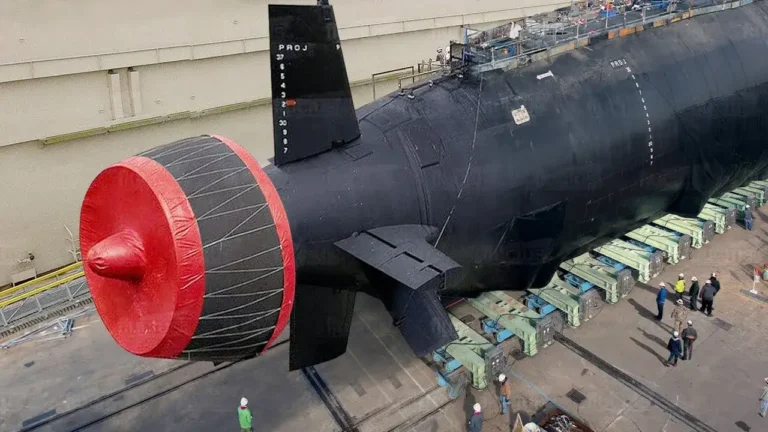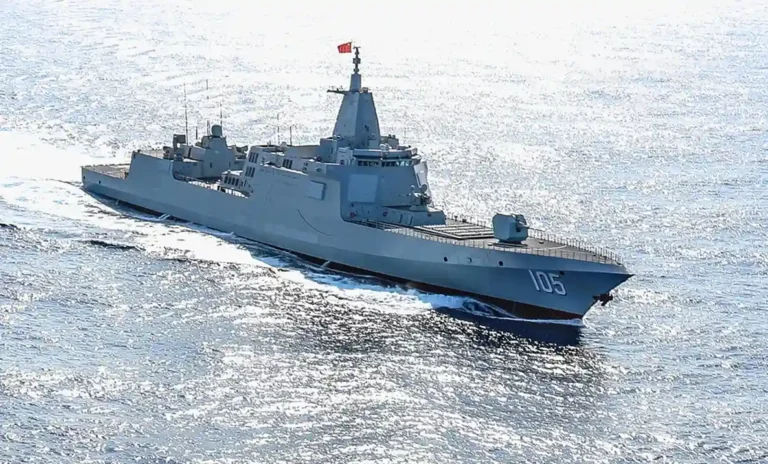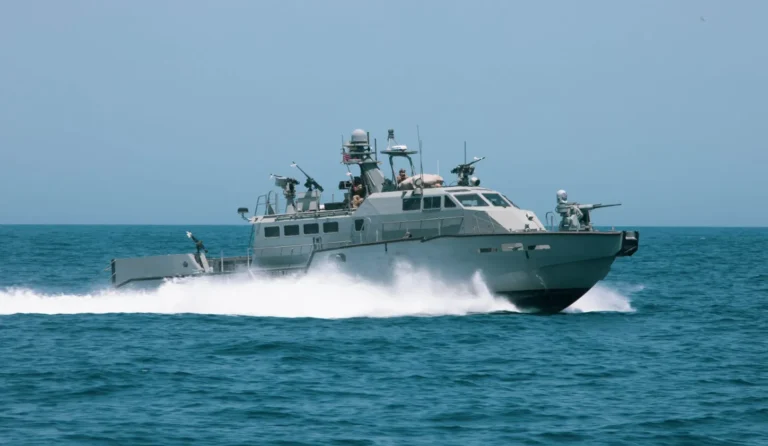Follow Us:
Share
Table of Contents:
Norwegian Frigate Incident
Defense Feeds – Hello everyone, still here for will know about at the Norwegian frigate incident, if you are curious on the underlying reasons of why it happened, stay tuned and don’t go anywhere!.
It was back on November 2018, the frigate HNoMS Helge Ingstad and the Malta-flagged oil-tanker Sola TS collided in the Hjeltefjord, Fjord, Norway. There were 137 people on board the frigate, including a mix of conscripts and regular crews, seven watch-standers and including two trainees.
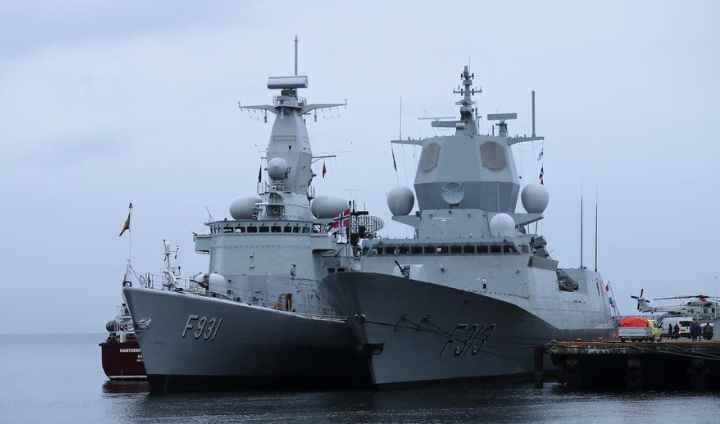
On the other hand, Tsakos Columbia Shipmanagement (Greek shipping firm), operated the tanker Sola TS in which a total of 24 people were on board and four people, including the pilot, were on the bridge.
At that time, the HNoMS Helge Ingstad sailed south at 17–18 knots with the automatic identification system (AIS) in passive mode, meaning that no AIS-signal transmission. The frigate’s bridge team had informed Fedje Vessel Traffic Service (VTS) of the frigate’s arrival in the vicinity and had been following the reported journey.
Moreover, the Sola TS had been filled with crude oil at the Sture Terminal and had informed Fedje VTS of its departure. The navigation lights on the Sola TS were visible.
Therefore, some deck lights were switched on to provide illumination for the crew who were fastening equipment and other items for the passage.
However, according to the investigation, this made it difficult for the frigate’s crew to see the navigation lights and identify it as a vessel.
Therefore, they did not communicate relevant information at the right time to the vessels involved.
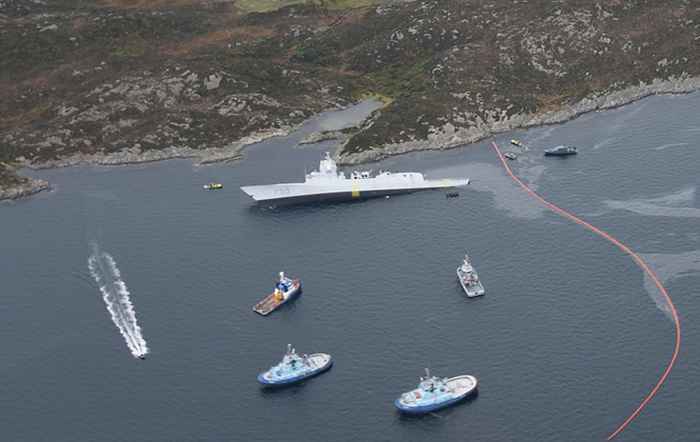
Actually, the Ingstad had notified Fedje VTS of entering the area 1 hour and 23 minutes before the collision. The VTS operator acknowledged but did not place the frigate in the monitoring system.
As the frigate sailing in the passive mode system, this ship was only shown as an unidentified echo on the radar display.
Before the collision, the officer discussed the traffic in the fairway and the nature of the illuminated object close to the terminal. They also observed the object on the radar and AIS but did not clarify what it was.
Meanwhile, the officers assumed that it was a stationary object near the shore. In advance of the collision, Fedje VTS had not followed the frigate’s passage south through the Hjeltefjord. The crew and pilot on Sola TS had observed HNoMS Helge Ingstad and tried to warn of the danger and prevent a collision.
Unfortunately, the crew on HNoMS Helge Ingstad did not realise that they were on collision course until it was too late. Unavoidably, the two vessels collided at about 04:00 local time (03:00 GMT) as the frigate was sailing inner fjords for training.
The Norwegian frigate, on the other hand, sustained significant damage on its starboard side, which resulted in catastrophic flooding and the ship’s sinking.
After the collision, water quickly moved through several watertight compartments, apparently via the ship’s propeller shafts, which pass through the bulkheads between the compartments through theoretically watertight openings (known as stuffing tubes or stuffing boxes) that should prevent progressive flooding.
Norway then embarked on a massive salvage effort. In April 2019, workers refloated the ship and transported it to the Haakonsvern Naval Base for additional assessment.
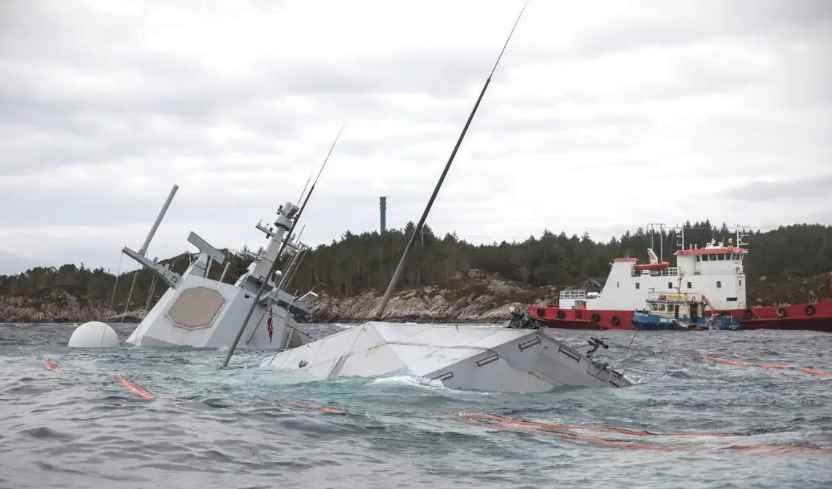
However, due to time and expense constraints, the Norwegian government stated that the ship would not be repaired. According to official estimates, the ship’s refurbishment might cost anywhere between $1.3 and $1.5 billion, and it could take up to five years due to the amount of the damage.
It can be presumed that a new-build ship with at least equivalent capability, on the other hand, would take around the same amount of time but cost only $1.1 to $1.2 billion.
Lastly, based on extensive investigations conducted by the Norwegian Accident Investigation Board, there were a number of factors that contributed to the accident.
A senior advisor at the Accident Investigation Board Norway, Ingvild Ytrehus mentioned that “the leadership, organisation and teamwork were not expedient during the period leading up to the collision, among other things, the training being conducted for two watch-standing functions on the bridge reduced the bridge team’s capacity to address the overall traffic situation.
Another thing is that the radar and AIS were used infrequently to monitor the fairway because of a deeply embedded situational awareness that the ‘object’ was static, and the passage was under control, she added”.
It’s worth noting that in a pair of tragic collisions involving US Navy Arleigh Burke class destroyers and commercial ships in the Pacific Region in 2017, the issues of experience and training, as well as confirmation bias and poor decision making, were all significant contributors to the incidents.
Share
Defense Feeds
Defense Feeds is publication focusing on informing, engaging, and empowering the world by providing accurate information from defense technology.
Powered by Defense Feeds © 2025 – All rights reserved.

